The Norris geothermal field is the largest active field in Yellowstone National Park. Many of the volcanic rocks have been hydrothermally altered to white, or covered with white silica sinter. Algae, iron, sulfur, clay, and other things can stain the deposits a variety of colors. The pale blue color of many of the pools is partly caused by light scattering from colloidal silica particles.
North Loop Trail
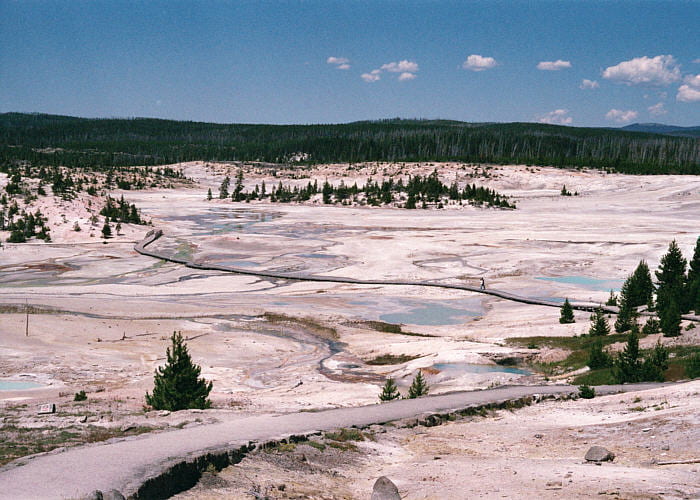
Overview from the Visitor Center of the northern part of the geothermal field. High temperatures, acids, and CO2 and other toxic gasses prevent growth of trees in geothermally active regions.

Steam vent (left) and hot water springs. The orange color is caused by iron staining of sinter and bacterial mats.
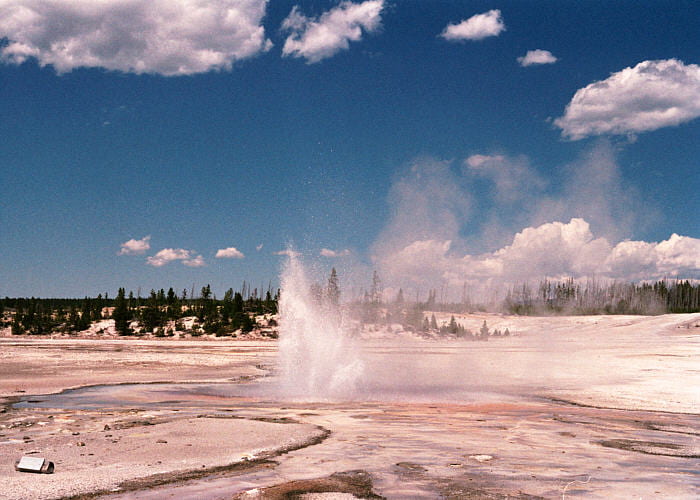
Small geyser jets from its pool of continuously boiling water.

Hot water stream, with filamentous cyanobacteria coloring the stream green.
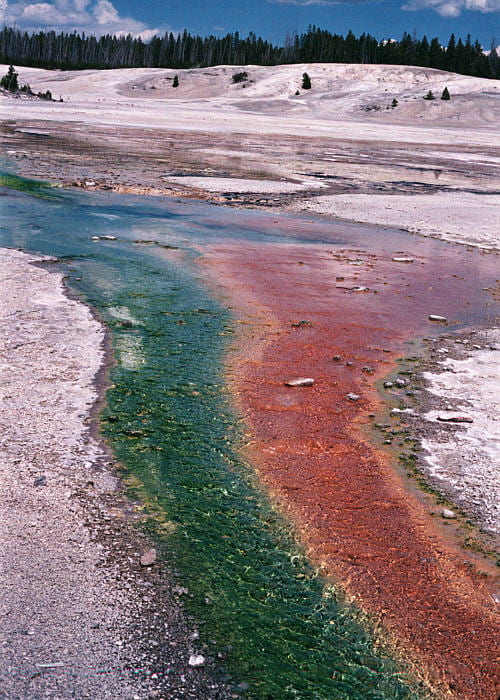
Stream showing the results of mixing of waters from two different spring regions. The green part of the stream has abundant filamentous cyanobacteria. The red part appeared to have no bacterial filaments, but instead has pebbles covered in limonite-stained crusts.

Boiling mud pool. The black scum is supposedly sulfide mineral grains, which are highly hydrophobic.

Soft mud floors of these gently boiling pools.
South Loop Trail
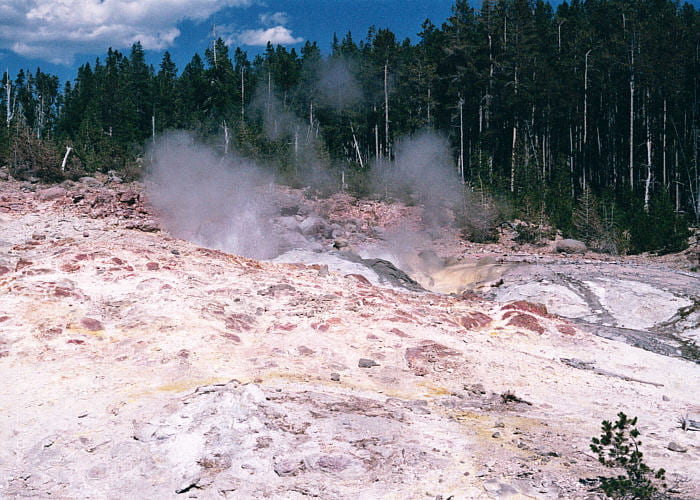
Steam vents with iron- and sulfur-stained sinter deposits and hydrothermally altered rocks.
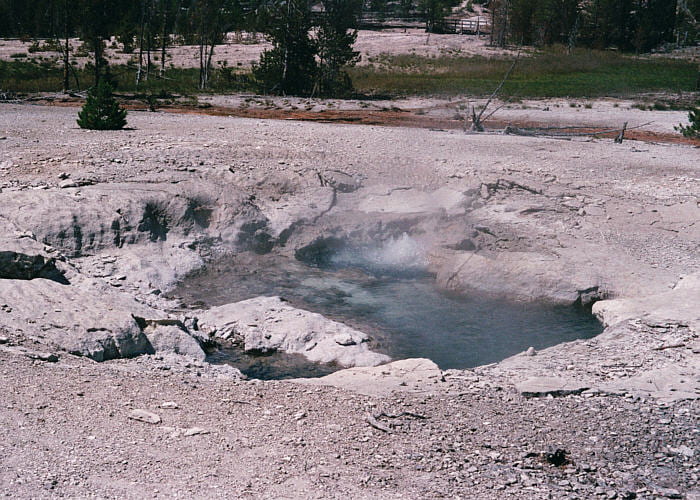
Rapidly boiling pool. With changes in rainfall and snowmelt, the local water level varies, and many pools fill and drain with the weather and seasons.

Rapidly boiling mud pool. Near this pool, part of the loop trail was closed because new vents were opening up, and there also were increases in soil temperatures. Because of hydrothermal removal of rock, precipitation of new minerals, and other subterranean changes in the geothermal plumbing system, geothermal fields are always changing. Don’t go wandering off the trails.
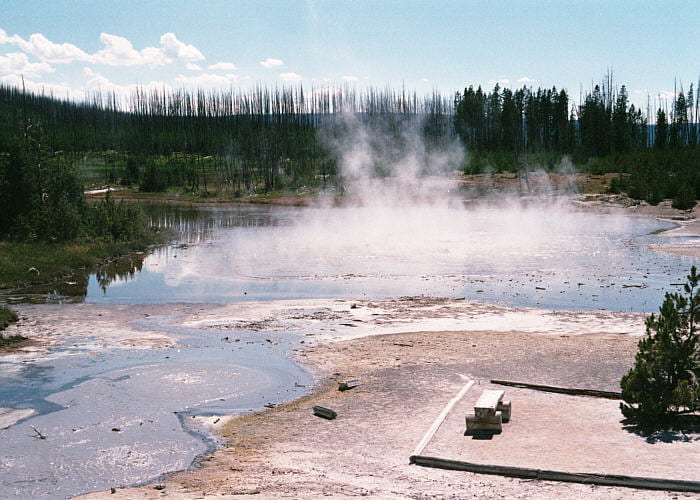
Large, rapidly boiling pond. With so many geysers, boiling pools, hot springs, steam vents, and large areas of hot and warm ground, one gets the impression that the geothermal heat lost by this field is large. Somewhere I read an estimate that the excess geothermal heat loss from all of the Yellowstone caldara is ~4500 megawatts.

Smaller, rapidly boiling pond. The close proximity of trees to this large boiling pool gives some indication of how the geothermal heat flux is narrowly focused under the pool.
